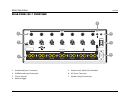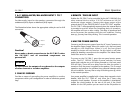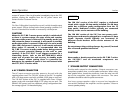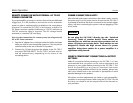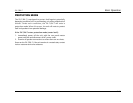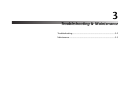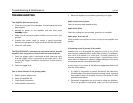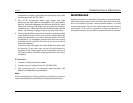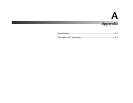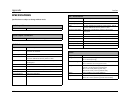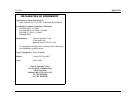
Troubleshooting & Maintenance Lexicon
3-2
TROUBLESHOOTING
The amplifier does not power on.
1. Check the rear panel circuit breakers. Ensure breakers have not
been tripped.
2. Attempt to power on the amplifier with the front panel
Standby button.
3. Make sure all rear panel power switches are set to the I (on)
position.
4. Examine the power cords to ensure a good connection
between the rear panel AC input connector and the wall outlet.
5. Check the wall outlet.
The TRIGGER INPUT is connected to an external device, but the
amplifier does not power on and off with the external device.
1. Verify the trigger cable is connected at both ends and verify
that the trigger cable is connected to the right device. Also
re-verify the trigger installation instructions as instructed in
Section 2.
2. Verify the trigger level.
One or more channels is not passing audio.
1. Reduce system volume level.
2. Power the amplifier off.
3. Check input connections.
4. Check speaker connections.
5. Allow the amplifier to cool before powering it on again.
Audio sounds out-of-phase.
Check to ensure proper speaker wiring.
Audio levels differ.
Check the settings on your preamp, processor or controller.
Audio plays, then cuts off.
Check speaker connections for short circuits at the amplifier and
speaker.
A humming sound is present in the audio.
Audible hum, or a discernible low frequency noise is one of the
most common problems within audio/video systems. This problem,
even when the volume is at a low level, is usually caused by a
common problem known as “ground loops.” A ground loop occurs
when there is a difference in ground voltages between two or more
components that are connected electrically.
In most cases, one or more of the following suggestions below will
solve the hum problem.
1. If a cable TV connection is present, disconnect the cable from
the wall outlet. If this eliminates the humming sound, a ground
loop isolation device is required. Contact your dealer or cable
provider for assistance.
2. Disconnect components one at a time to isolate the problem.
Once the problem is identified, make sure the associated



